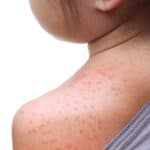The UV Index
The UV Index is an important tool that can estimate the risk of UV exposure from the sun at a particular time and place. It is a numeric scale from 1-11+. You’ve probably noticed this number on various weather applications, including on electronic watches. 1-2 is considered low, 3-7 is moderate, 8 and beyond is high to extreme. The National Weather Service and EPA developed the UV index in the 1990s as a way to plan ahead to ensure you can protect adequately from the sun. Here in Florida, even when it gets chilly the UV index remains high. In January, for example, Florida’s mean UV index is a 5-8, in contrast, Maine’s mean UV index doesn’t reach those levels until about June. The high UV index for much of the year in Florida makes it imperative to sun protect on a regular basis.
There are numerous different sunscreens, and even more sunscreen brands, which can be a bit overwhelming. Broadband sunscreen is a term used to denote that the sunscreen protects skin from both UVB and UVA light. Chemical sunscreens absorb the UV rays by converting the sun’s energy into heat. Mineral sunscreens (those containing zinc oxide and titanium dioxide) block the sun’s rays by acting as a shield and reflecting the light. Spray sunscreens are most often chemical-based sunscreens, but in recent years sunscreen manufacturers have started making mineral-based sprays as well. Spray sunscreen lends itself to uneven application, so it should either be rubbed in by hand after spraying, or used for a second application rather than a primary application. Given the high UV index in our area, it’s a good idea to visit your dermatologist regularly and discuss any questions you may have regarding adequate sun protection and skin health.
Mahoney Dermatology is conveniently located in two locations; Pinellas Park and St. Petersburg and are open to new and returning patients. Our providers can assist you with many advanced solutions for improved skin health!

 Previous Post
Previous Post Next Post
Next Post